Long term developments
Genetic algorithms
Thermoplastic composites have specific processing possibilities, which can be utilised in novel, specific constructive details (e.g. by co-consolidation). These details can offer enhanced mechanical performance at lower cost. This does, however, affect the overall component design. Genetic algorithms (GA) offer the possibility to handle discrete variables, for example the number of stiffeners. Neural networks (NN) can be used as a global approximate function tool for the structural evaluation of aircraft components. Combining both methods leads to a reduction of a single optimization runtime, such that optimizing an assembly of many components will become affordable. Previous experience with a vertical tail plane of composite material has been very positive.

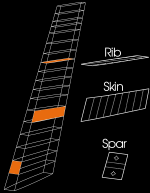
Press forming simulation of thermoplastic composites
Press forming is a very cost efficient process that can be applied to thermoplastic composite preconsolidated laminates in order to rapidly manufacture small to medium-sized parts, e.g., ribs for aircraft structures. The use of press forming to manufacture continuous reinforced thermoplastic parts is constrained by the restricted formability of the fibres and by a reduced control of their final disposition (arrangement). Current research of the DPCS department at Technical University of Delft on press forming of advanced thermoplastic composites, is focused on a deep understanding of the main forming phenomena in the process: inter-ply slip, intra-ply shear and friction between the mould and the composite laminate. A crucial part within the investigation is the development of a model which – accounting for all these three phenomena – can predict the final quality of the part and thus be used as a valuable design tool.
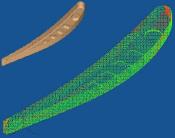

PAN-FORM FEA simulation of a flap rib
Ultrasonic welding of thermoplastic composites
Ultrasonic welding is a very fast welding technique regarded as very suitable for thermoplastic composites. Current research carried out at the DPCS department of Technical University of Delft on ultrasonic welding, is focused on gaining a deeper understanding into the complex heating and bonding mechanisms involved in this process. Special attention is being paid to the role of the energy directors in the welding process and of simplified energy directing alternatives. Likewise the influence of the welding parameters in the quality of the welds is under study. Comparisons between ultrasonic and other welding and joining techniques are being carried out.
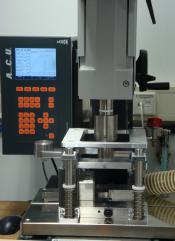
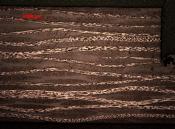
Ultrasonic welding equipment and weld cross section
Resistance welding of thermoplastic composites
Resistance welding is so far the most mature welding technique applied to thermoplastic composites. It provides high quality and repeatable joints with relatively simple and inexpensive equipment. Since different processing windows have to be defined for each different configuration to be welded (like parts, heating element, insulation), modeling is regarded as an indispensable tool to improve the efficiency of the process definition. Consequently, research is being performed at DPCS-department of the Technical University of Delft in order to model the resistance welding process with a twofold objective: on one hand, creating a tool to define optimum welding conditions and, on the other hand, enhancing the controllability of the resistance welding process through real-time prediction of the temperatures at the welding interface.
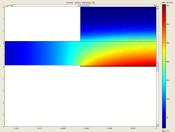
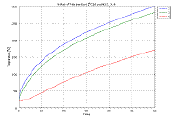
Temperature distribution in a single lap shear welded sample
Knowledge based modelling
Knowledge Based Engineering (KBE) represents the technological implementation of the Knowledge Management vision and strategy for the engineering business. KBE offers designers a technology to capture and reuse product and process multidisciplinary knowledge in an integrated way, in order both to reduce time and cost for engineering applications, automating repetitive design tasks, and support conceptual design activities. KBE provides designers with tools to virtually access their ideas; to model the multidisciplinary aspects of products; to manipulate geometry and annexed knowledge and to support the investigation of multiple what-if on their design.
Within the TAPAS1 and TAPAS2 projects KBE is identified as the facilitating technology to design and optimize aircraft components for structural integrity, (manufacturing) cost and manufacturability. The implementation will be build around one or more Multi Model Generators (MMGs). These KBE applications describe a product in an object-oriented fashion, giving the design model its modularity. All objects in the product tree are parametrically defined, for example the geometry of a rib is described in terms of physical parameters as length, height, flange thickness, etc. To this end a flexible analysis model will be build based on Cost Estimation Relations (CERs). These relations couple the required manufacturing resources to the features of the product model. The cost estimation tool that will be developed will perform a detailed cost estimation based on the aircraft component model created by the accompanying MMG. The cost estimation tool relates (geometric) characteristics, such as a part area or volume to manufacturing time.
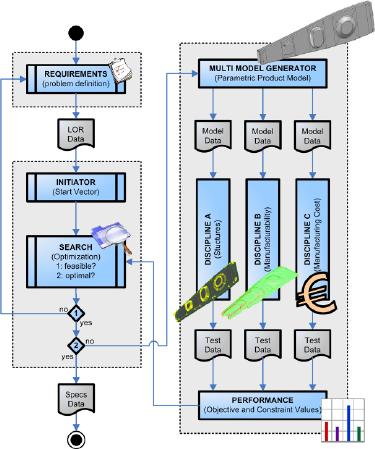

 Nederlands
Nederlands











